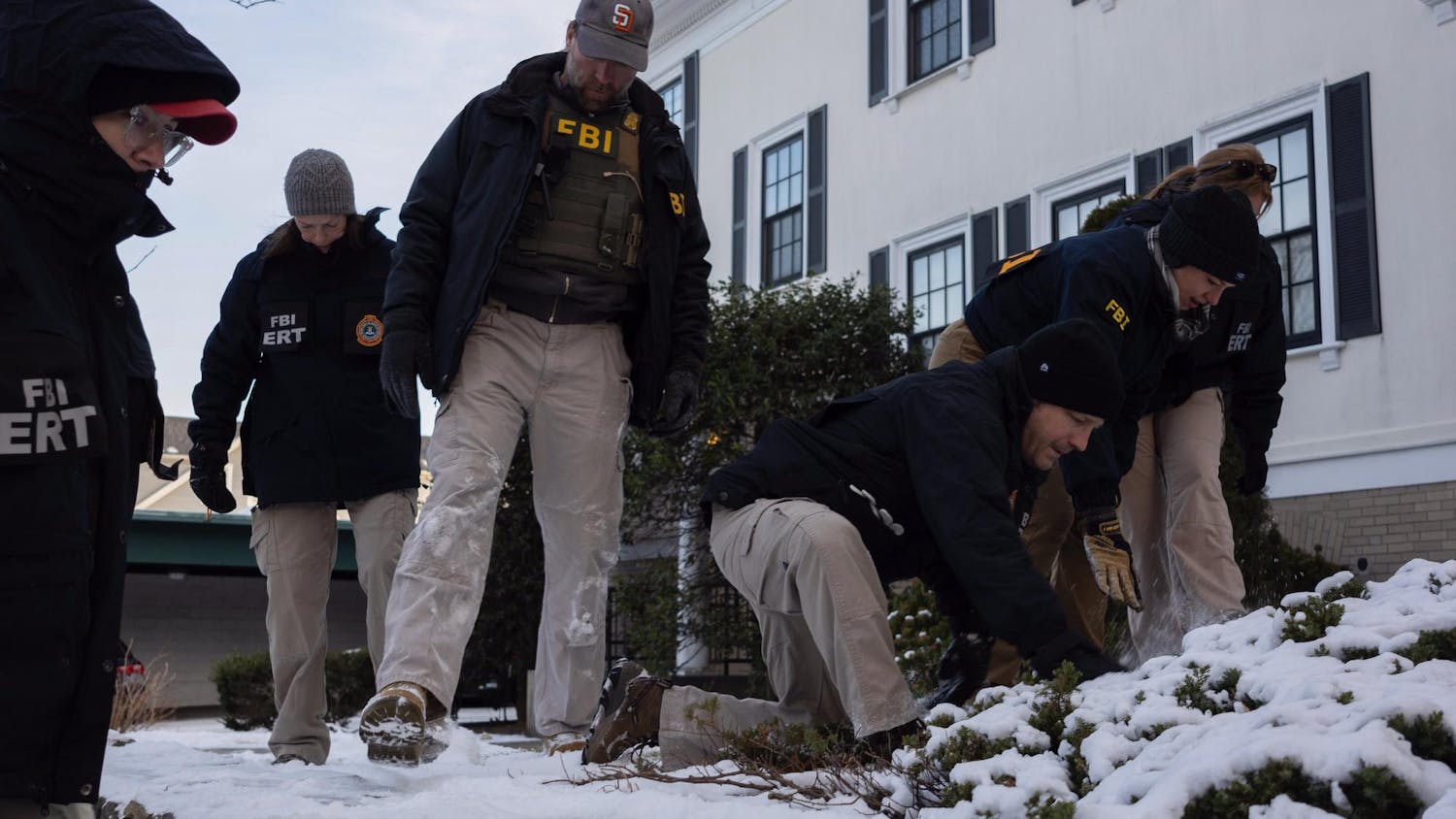As cases of the Omicron variant started to appear in the U.S. in December, researchers at the University began work on making significant readjustments to their epidemiological models — which help predict COVID-19 curves and inform policy-makers — to reflect the pandemic’s new conditions.
Omicron calls for greater predictors of infection, reinfection
Compared to previous variants, Omicron is more infectious and remains the first variant with substantial evidence of immune escape — meaning people who were previously infected with other variants remain susceptible to reinfection, according to John Fulton ’71 MA’74 MA’75 PhD’78, a clinical associate professor of behavioral and social sciences and former associate director at the Rhode Island Department of Health.
For example, if roughly 250,000 people in R.I. were considered susceptible to the Delta variant at the beginning of December, that same 250,000 and around an additional 250,000 would also be considered susceptible to Omicron, Fulton explained. His predictive model factors in the new variable of reinfection with around 25% of those previously infected still counted as susceptible to Omicron. The model also assigns a higher R-naught value — the average number of people one person can infect while contagious — to reflect Omicron’s greater infectiousness.
Fulton is part of a team of University and outside researchers that has built predictive models since the beginning of the pandemic. He has now developed Susceptible, Infected and Recovered epidemiological models with a competing approach to account for both Delta and Omicron variants. The competing SIR model works by alternating between running a Delta model to infect an estimated group of people susceptible, and then moving a portion of that group that is still susceptible to an Omicron model to be infected.
How COVID-19 models help University, state officials
COVID-19 projections for the University’s spring 2021 semester successfully predicted the actual number of cases documented, according to Professor of Emergency Medicine Adam Levine, who helped build predictive models as part of the University’s Healthy Task Force. The actual number of cases per 1000 students landed around the middle of the low and high projected cases, based on University data he was provided with.
The projections helped inform the University during the fall 2020 and spring 2021 semesters about logistics such as the number of isolation beds, quarantine rooms and Student Health services expected to be needed by students, Levine said. The fall 2020 projections underestimated the actual number of cases because the researchers did not know to account for weekly asymptomatic testing at the time, he said. The spring model adjusted for this based on the student compliance to testing observed from the fall semester.
Predictive models likewise have served as tools for state officials to “make decisions around critical resources such as hospital capacity, as well as to prioritize staff time to what will be most important in the coming months,” Kevin Wilson, head of data science at the University’s Policy Lab, wrote in an email to The Herald.
The models also support other raw data sources that “indicate that the best way to quell this pandemic is for wider vaccinations, including booster shots for those who are eligible,” he added.
Currently, the Policy Lab continues to model the total number of COVID-19 cases, hospitalizations and deaths, as well as ICU and ventilator capacity.
Models can also provide insights into how well people are following safe practices that mitigate or prevent spread of the virus. After noticing the model projected a faster wave of cases than what was actually predicted, Fulton factored in a percentage of mitigation to account for people’s behaviors decreasing susceptibility, he said. He found that using around 25% mitigation, or 25% less spread than should have happened given transmissibility, best matched projections with observed data. This percentage was adjusted lower during the holiday season, when less mitigation was expected.
On the whole, Fulton’s team observed a “sine wave of risk and mitigation,” where people tend to exercise less safe behavior when cases dip, which then contributes partly to more cases. This supports a known phenomenon that “people vary their behavior on the basis of their perception of risk.”
Need for better data moving forward
While data modeling continues to provide value during the pandemic, some researchers stress the importance of the quality of data that goes into these models. “At the end of the day, they’re only as good as the data that we have and the more complex the human interactions become, the less well the models perform,” Levine said.
The U.S., unlike countries such as Singapore and South Korea, lacks the same quality and extent of data around contact tracing, he said. Data from those countries demonstrate that symptomatic people and people living in close proximity were much more likely to infect other people, he added.
“We (spent) a lot of time worrying about things like public transportation, etc., where the risk of transmission goes much lower, and didn't spend as much time worrying about the rates of transmission in places where it was higher,” Levine explained.
“For the field of data science as a whole, I think the pandemic has highlighted deep and long standing issues in administrative data,” Wilson wrote, such as questions on “how data is collected, how specific outcomes are defined and who the data is leaving out.” He hopes that data science education starts to incorporate tools that “ask data users to explicitly consider these concerns when using data” and develop “a better vocabulary to discuss these limitations with policy makers and the broader public.”
While the methodology of predictive modeling has not changed much over the pandemic, researchers have learned much about the COVID-19 virus and how the population has responded to policy changes, and they have accumulated evidence of immune escape for Omicron, Fulton said.
Researchers have also developed more accurate parameters based on scientific literature to run these predictive models, he added, describing models from a year ago as “run crudely on guesstimates.”
“Now that we’ve solved for more parameters,” Fulton said, “it’s easier to solve for the ones that are left.”





